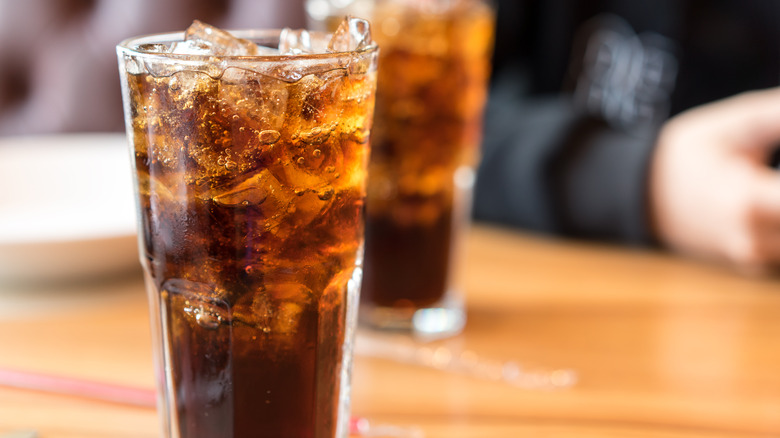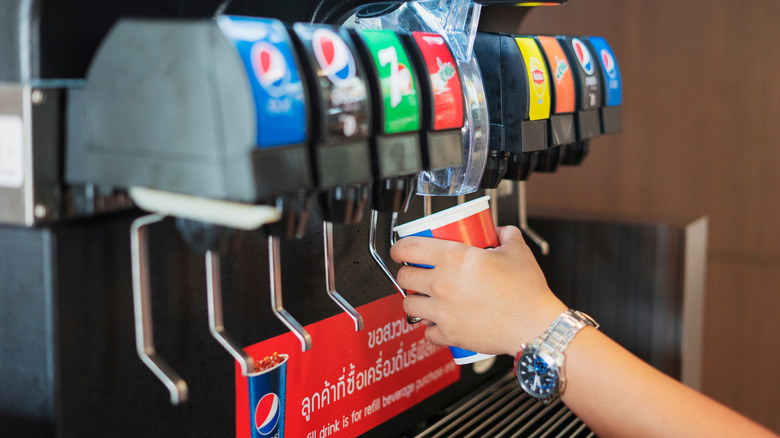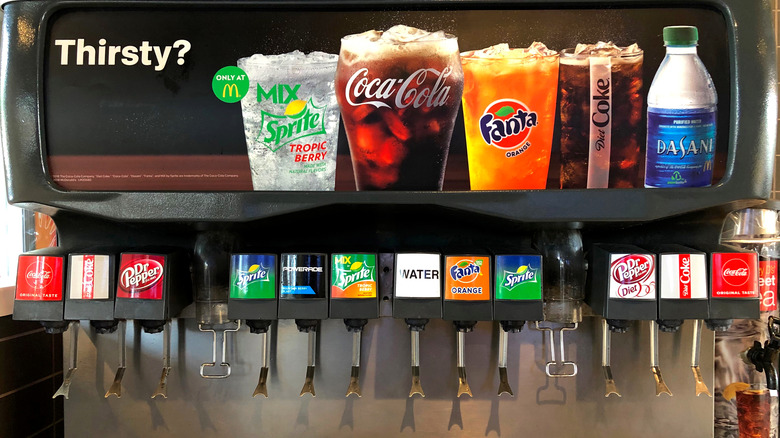Is There Any Real Difference Between Soda And Pop?
Americana means many things. Snacking on Cracker Jack's at a ballgame or homemade ice cream on the Fourth of July, there are certain traditions that invoke a sense of Nationalism. Soda fountains and the soft drinks they introduced are one of those things. According to Statista, despite Americans' trend toward drinking less soda, over 50% still have multiple soft drinks per week and many have one per day. But it's not typical to refer to those beverages as "soft drinks." That's an industry term for a flavored, sweetened, and often carbonated beverage (per Britannica).
Americans call soft drinks a handful of names. In most of the country, it's "soda." In the Midwest, it's probably "pop." Minnesota Public Radio took a deep dive into why we can't agree on a proper name. Carbonated beverages became mainstream in soda fountains at the end of the nineteenth century. So, "soda" makes sense. "Pop" has a few origins but it probably has to do with early bottles for carbonated beverages that emitted a loud "pop" as marble was dislodged to open the bottle. Japanese bottler Sangaria still uses these Codd Bottles for their Ramune soft drinks.
Soft drink slang differs across America
Why those two names are stuck in certain regions and not others can be tough to trace. But, tradition tends to stick. Local slang is still incredibly diverse. "Uff-dah" means a lot to Minnesotans and "holler" isn't just a raised voice in West Virginia, but food slang might be even more difficult to grasp. Try ordering a "milkshake" in Rhode Island and they'll know what you mean, but they'll probably let you know it's called a "frappe." But, order a "frappe" in Montana and you'll only receive a blank look. Grasping your area's food slang will give you serious street cred.
A survey from Insider reveals that of the few handfuls of slang for "soft drink," three have taken deep root in their regions. They explain, "Soda is the preferred term in the Northeast, most of Florida, California, and pockets in the Midwest around Milwaukee and St. Louis. Pop is what people say in most of the Midwest and West. And coke, even if it's not Coca-Cola brand, is what people call it in the South."
The biggest difference between soda and pop
Is there a difference between soda and pop? Nope. Just a difference in where we grew up. The map created by Pop vs. Soda is a stunning visual for these soft drink dialects. You can even contribute to the research by adding your hometown's soft drink name tendency. The data shows that "soda" has a slight edge over "pop." Each of those far outnumbers "coke" and the other entries, including "soft drinks" in Louisiana and North Carolina. Or, as Insider notes, "In small pockets of the Deep South, cola is the preferred. And in Boston, tonic is what a decent amount of older residents grew up saying."
Minnesota Public Radio tells us that most of the country was using "pop" fifty years ago. But usage that high is now limited to the Upper Midwest. That will probably continue to fade as more and more people migrate around the country, erasing some of these regional dialect differences.
Until these regional distinctions fade, it's best to keep in mind what your neighbors use to describe a sweet, bubbly refreshment. Because, no matter your favorite soft drink, it's always good to know how to order one.


